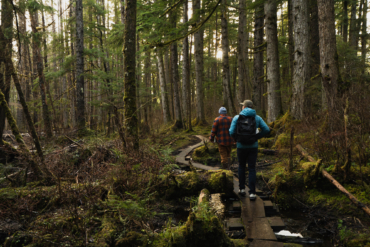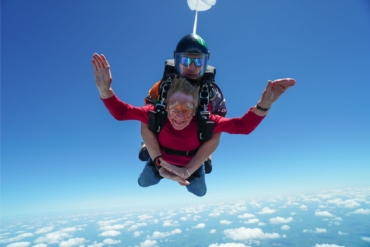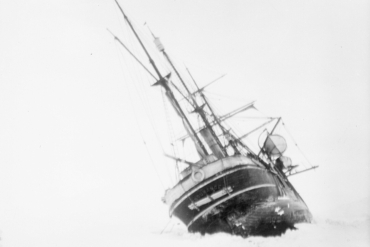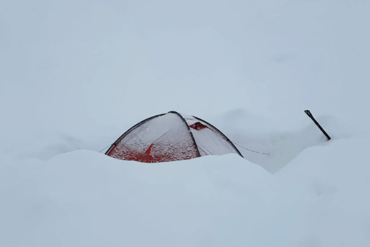On a rocky trail in South Dakota’s Black Hills, granite spires propped above in the air, Alec Walker had a moment of rare personal clarity and fate. It was the spring of 2004, and Walker, a junior at TrekNorth High School, had sidled up with his science teacher for an ad hoc geology lesson on a hike.
They examined quartz crystals and feldspar, an expanse of granite tumbling ahead and out of sight. “I realized I could do this for the rest of my life,” said Walker, now an aspiring geologist and third-year student at Michigan Technological University.

Field-based epiphanies are a hallmark at TrekNorth, a public charter school in Bemidji, Minn., where outdoor adventure is regarded as a pillar to learning. The 7th through 12th-grade school, which has 165 students and 13 teachers, is based in a strip mall off Bemidji’s Paul Bunyan Drive. But it runs its extensive Outdoor Adventure Program to corners as far afield as Alaska and the Appalachian Trail.
The completion of a high adventure — from mountain climbing in Washington’s Cascades to backpacking a section of the Superior Hiking Trail — is a requirement for each student before graduation. “Wilderness trips are a catalyst for integrity, confidence and leadership in kids,” said Dan McKeon, the school’s executive director.
McKeon came to TrekNorth as an English teacher when the school opened in 2003, working his way up to become director three years later. A lifelong outdoors enthusiast, McKeon has roped up TrekNorth students to climb 200-foot-tall formations in the Needles of South Dakota. He has run dozens of trips, including paddling to far reaches of the Boundary Waters Canoe Area for eight days at a stretch.
He said students gain through day trips and expeditions by building traits impossible to achieve with chalkboards and books. “Students learn on trips that they are tougher than they realized, and can do more than they ever thought possible.”
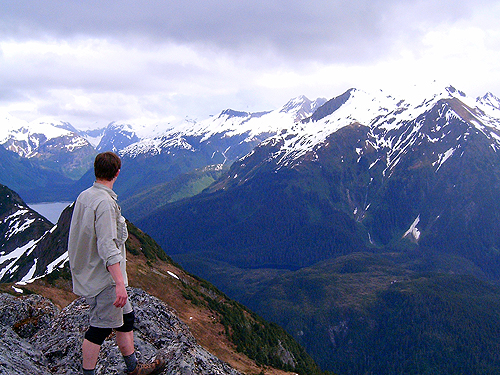
The student-teacher relationships formed on wilderness excursions are authentic and strong. “After a trip, you feel comfortable talking to your teacher about anything, and you are friends,” said Alec Walker. “Then you want to do good for your teachers in class — it’s a huge motivator.”
Walker, who was not outdoorsy before enrolling at TrekNorth, said he would wake up during his high school years excited to go to class.
Beyond backpacking and scaling rock walls, TrekNorth requires a traditional class load — math, science, social studies, and English included. The school is governed and funded the same as any public school in the state of Minnesota. Its teachers are licensed by the state.
Advanced-placement classes, which can count toward college credit, are encouraged at TrekNorth, and most juniors and seniors are enrolled in one to three AP courses each year. McKeon notes that U.S. News & World Report magazine has twice awarded TrekNorth as a “top public high school.”

A third focus at TrekNorth incorporates volunteer work and community projects into curriculum, including students assisting at area nursing homes, soup kitchen work, and preparing packages of food for a charity focused on third-world nations.
For students like Carrie Miller, a senior who transferred from Bemidji High School in 2007, TrekNorth’s nontraditional learning environment is a draw. On trips from northern Minnesota to the Appalachian Trail, Miller said TrekNorth has changed the way she looks at the world.
“I used to really care about clothes and what other people thought about how I looked,” she said. “I’ve discovered there is so much more to life.”
Miller, formerly an aspiring fashion designer, now says she’s interested in an environmental-based career. “Maybe sustainable agriculture,” she said. Close bonds with teachers and fellow students, Miller added, have made her time at the school meaningful. “You develop connections not possible in most other settings.”

She tells the story of a trip last fall on the Appalachian Trail when she and a classmate were struggling with blisters and a slow pace. It was near sunset, on a mountainous section of the route, and the group had trekked that day more than 15 miles with heavy packs.
Miller and the other student — a new classmate she didn’t know at the time — switched shoes. They finished the hike together, blisters hurting but more manageable, as the hills were growing dark.
“When you literally see your classmates struggling to climb a mountain, you learn to help each other out,” Miller said. “Then you come back to school and the whole class environment has changed.”
—Stephen Regenold writes about the outdoors at www.gearjunkie.com.

